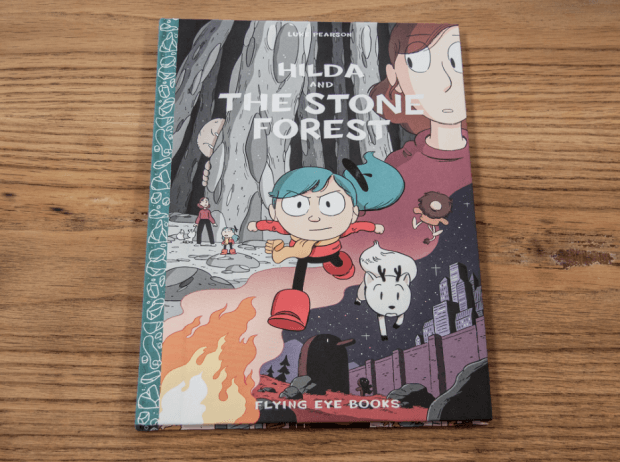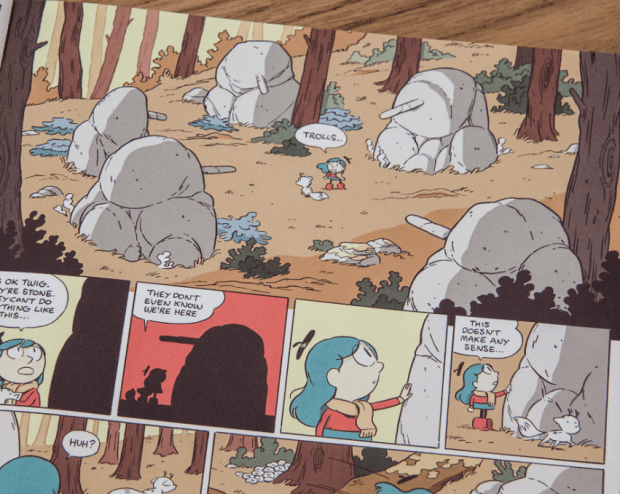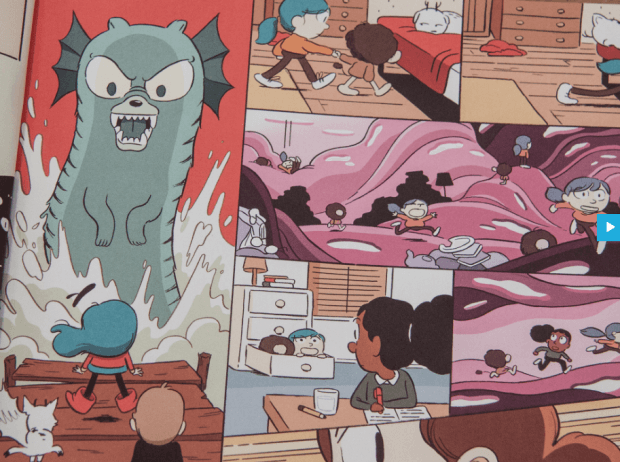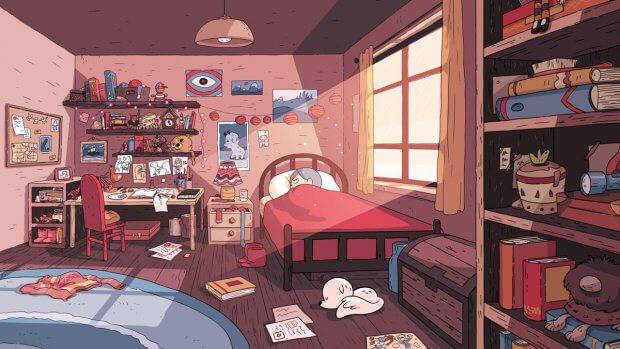Interview with ‘Hilda’ creator Luke Pearson
We were recently gifted with the latest installment in the children’s book series Hilda, created by Luke Pearson and published by Flying Eye Books. In the new adventure Hilda and the Stone Forest we follow our protagonist as she turns from a scrappy young pup to an adventurous young lady. Hilda may be growing but she isn’t necessarily aware of the dangers around her, leaving her mother ever more worried. Along with a ragtag team of mystical and bizarre creatures and face-to-face encounters with the legendary Trolls of Trollberg, Pearson’s latest Hilda outing continues to expand their world and ever-shifting mother/daughter relationship. Along with the narrative strength of this book comes the continuously engaging style and character that Pearson brings to the world with an uncanny knack for colour and design which has made this one of the most stylistically appealing children’s character on the scene today.

Excited fans of the comic book-styled children’s books where also happy to discover that the film and TV streaming site Netflix has picked up Hilda for an animated series due to come out in 2018. In anticipation of this upcoming adaptation we took a look at the new book and were able to slide a few questions creator Luke Pearson’s way.
In your latest entry in the Hilda series, we see a lot more of Hilda’s mum and their relationship. Is the story of Hilda growing up taken from personal experience at all?
It’s actually not. I have two parents, I’m not an only child. There aren’t many obvious similarities. I’ve drawn from personal experience from time to time across the books. For instance a lot of the scout stuff in The Black Hound is drawn from actual memories and the point of Hilda not feeling like she was very good at it is true to my experience. And obviously her emotions and the way she reacts to things are closely connected to myself, past and present. But the relationship of Hilda and her Mum isn’t something that has a real life precedent for me. It’s something that’s evolved fairly naturally across the series, as Mum has become less of a bit-part and something closer to a co-lead.

What considerations go into the continuing evolving of a character like Hilda?
Writing Hilda as a character is fairly instinctive. I don’t think too hard about how she should be evolving, I just try to be consistent in her characterisation and let her react naturally to situations I put her in. Despite the fact that I haven’t consciously aged her, I feel like she’s naturally gotten older. There’s something of her approaching adolescence in this book, in the way her relationship with her Mum has become more fraught. For the first time she’s not an entirely sympathetic character, for the whole of the book at least.
There is quite a strong message of looking beyond stereotypes in this installment of the story; do you feel that Hilda has an educational message alongside her adventures?
I don’t set out to include a particular educational message, but if there’s a message to be taken away, I’m careful to make sure it’s in line with my own morals and values.

Congratulations on the development of the Hilda Netflix series. How did this come to be?
Thank you! People were interested and things worked out. That’s the long and short of it.
In terms of story will the TV series be an adaption of your current book(s) or be completely separate?
A bit of both! It’s going to cover all the current books. Some of them have been reworked or merged, but just about every major scene from the books is going to be present. And then there are new stories in between. It’s not going to match up with the books, on account of characters introduced later in the books being introduced earlier and characters introduced earlier in the books sticking around for longer. But in spirit it’s pretty close.
What has it been like adapting your characters and world into animation?
It’s interesting. I’m really enjoying working with other people and being involved in something that’s bigger than me. I’ve been involved in basically every facet of it from the start, but obviously for the most part I’m watching other people do the adapting. The art style and designs are very faithful to the comics, so it’s quite weird watching stuff come in that I can sort of see my hand in, but that I didn’t draw. I’m also just enjoying experiencing how a cartoon gets made! I sort of feel like I’m on an intimate, extended guided tour of an animation production. It’s all pretty exciting.

Have any challenges or difficulties arisen with this new venture?
One of my main roles is looking over everything that comes in and giving notes on it and I’ve found it difficult sometimes to differentiate between things that actually don’t work and things that just aren’t exactly how I would do them. Particularly in relation to the stories that I’ve already written.
There have been lots of challenges really, simply because it’s a very different process to making a comic. But mostly ones that I’m enjoying. Looking back at the earlier books and reconciling decisions I made then with the way I would do things now has been tricky, but interesting. I’m writing the scripts for a couple of episodes which is something I’ve never done before, so that’s a challenge too.
In regard to both TV and book series, do have an idea of what’s next for Trollberg and Hilda, as she continues to mature?
Anyone who’s read the latest book should rightly assume I have some idea where the next story might pick up. I definitely know about that one.
For more about Luke Pearson and Hilda visit lukepearson.com and flyingeyebooks.com

